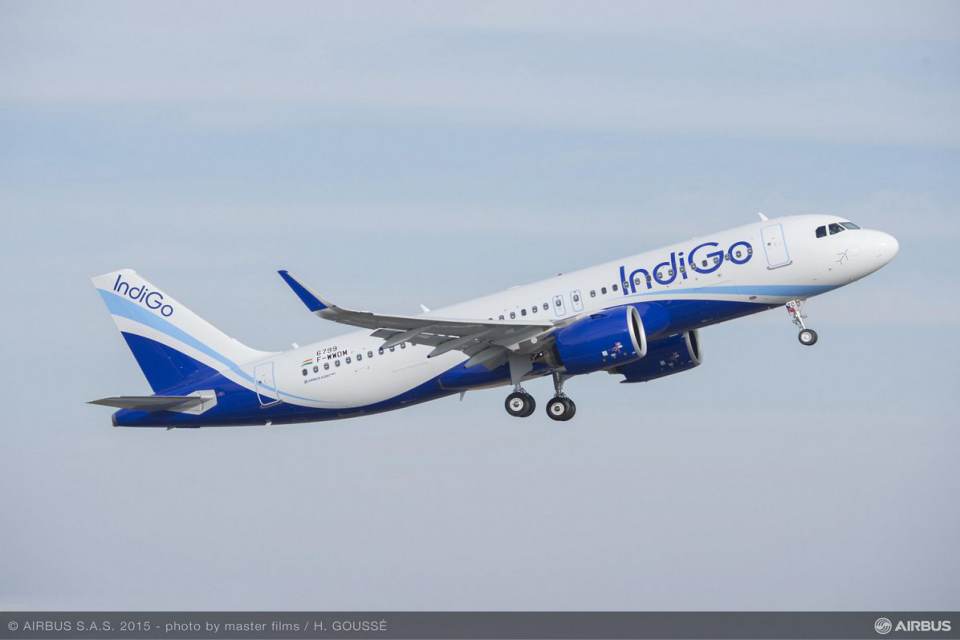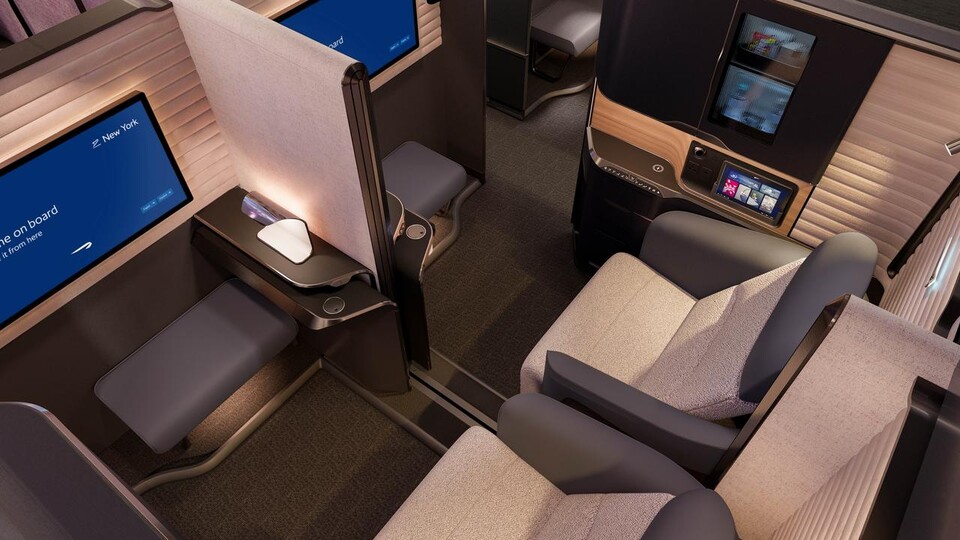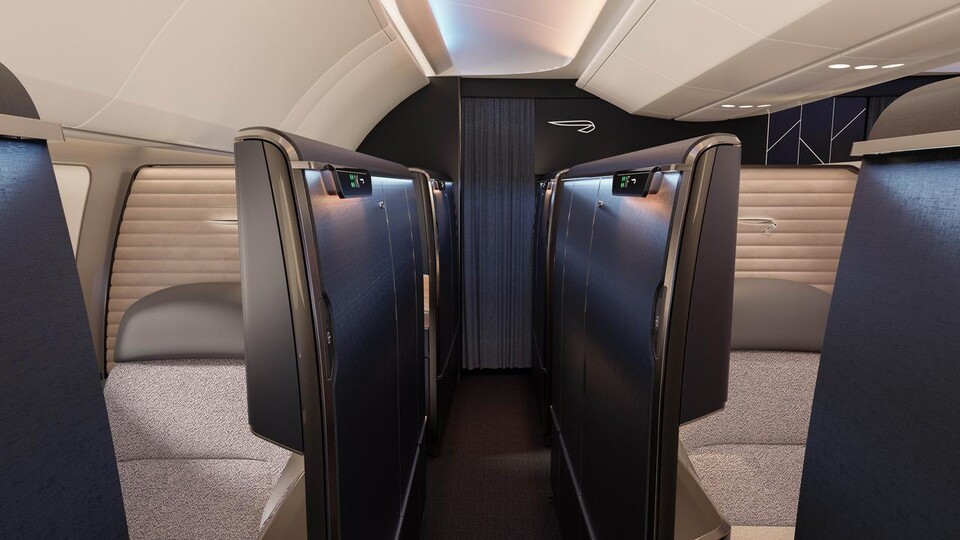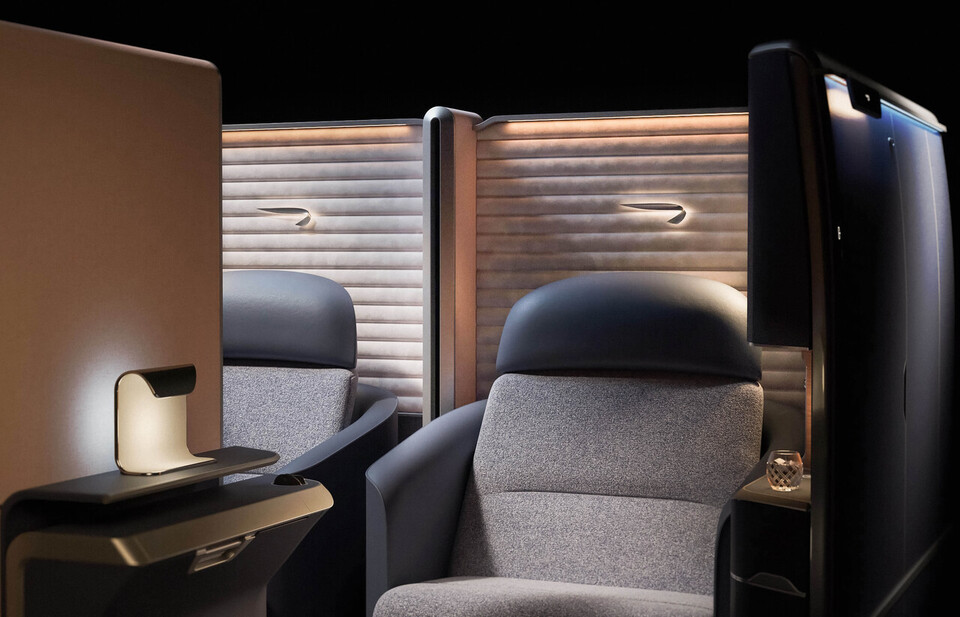Airlines
Indigo’s flight reports engine stalls warning mid-air as big jet creates ‘wake-turbulence’
Indigo’s flight reports engine stalls warning mid-air as Boeing 777 creates ‘wake-turbulence’

An Airbus A320 operated by IndiGo experienced an uncommon occurrence on Monday while passing over the Guwahati to Mumbai route at a height of about 36,000 feet. The captain detected an Engine 1 stall warning signal that suddenly disappeared. Due to a larger jet of a Boeing 777 aircraft traveling in the opposite way of Indigo’s A320 aircraft, which generates “Wake Turbulence” mid-air, IndiGo flight 6E-6812 briefly had an engine 1 stall warning signal, an official told ANI.
The IndiGo plane was traveling well to its destination after seeing wake turbulence from an Emirates Boeing (B-777) large airliner. At roughly 6:32 am, an IndiGo flight with a destination of Mumbai departed from Guwahati airport on time. The huge jet aircraft that crossed in the opposite direction of the Indigo aircraft caused the “wake turbulence,” which is termed.
Four myths about air turbulence. How Dangerous Is It?(Opens in a new browser tab)
The major US-based transportation regulator, the Federation Aviation Administration (FAA), explicitly states that wake turbulence can occasionally be insignificant or catastrophic.
The weight, wingspan, size, and proximity to the original aircraft, as well as the point of the vortex collision, determine the impact of the encounter.
Wake turbulence can impose rolling moments that are greater than the roll-control authority of approaching aircraft, thereby endangering the safety of the passengers and damaging the aircraft. When passing through another aircraft’s wake, pilots should always be alert for the risk of encountering wake turbulence and change their flight route appropriately.
There was no harm done to the plane or the passengers, and the airline’s company reported the occurrence to India’s aviation oversight agency, Director General Civil Aviation (DGCA).

Airlines
British Airways Unveils Its Brand-New First Class Cabin for the Airbus A380

British Airways has introduced its brand-new First Class seat, blending sleek design with expert British craftsmanship. Reflecting modern British luxury travel, this new cabin is part of the airline’s Airbus A380 retrofit plans, set to take flight in mid-2026.
The updated First Class cabin has been crafted to feel like a modern luxury hotel in the sky, complete with cozy touches and thoughtful British details.
Etihad Airways Unveils 10 Exciting New Routes for 2025
Designed by top experts from across Great Britain and Ireland—including London, Glasgow, West Yorkshire, Kilkeel, and Dublin—the seat reflects the best of British design and quality.
Features and Comforts
The new First Class seat is ultra-wide at 36.5 inches, with a bed length of 79 inches for ultimate comfort. It includes:
- A multi-purpose ottoman and stowable table.
- A 32-inch 4K TV screen.
- Adjustable mood lighting with modes like “relax,” “dine,” and “cinema.”
- A cocooned 60-inch curved wall for privacy while maintaining a spacious feel.
Passengers traveling together can enjoy a shared experience with a sliding divider that creates a lounge-like space. The stowable tables also allow for “buddy dining,” where two people can dine together.
The cabin’s flowing curves, inspired by the iconic Concorde wings, create a welcoming and stylish environment. Additionally, passengers can now wheel their luggage directly into their personal storage space, making settling in easier.
This country tops visa rejections in the popular Schengen countries
British Airways carefully considered customer feedback when designing this cabin. The seat includes practical storage and features like a fully rectangular bed for home-like comfort. Every detail, from usability to elegance, has been designed to enhance the travel experience.
British Airways is proud to be the only UK-based European airline offering a First Class product across the Atlantic. british airways premium economy and First Class travelers enjoy exclusive perks such as stylish seats, access to luxury lounges, fast-track security, and the First Wing at Heathrow. The airline ensures a premium experience from booking to landing.
This cabin upgrade is part of British Airways’ £7 billion investment in improving customer experiences. The airline has already introduced over 120 initiatives, including new short-haul seats, free onboard Wi-Fi messaging, and refreshed lounges worldwide.
-

 Aviation2 months ago
Aviation2 months agoMicrosoft Flight Simulator Raises $3 Million to Bring Back the An-225 Mriya
-

 Airlines2 months ago
Airlines2 months agoQatar Citizens Can Travel to the United States Without a Visa
-

 Aviation2 months ago
Aviation2 months agoQatar Airways bans these new Electronic Devices on plane
-

 Airlines2 months ago
Airlines2 months agoJapan Airlines Rolls Out Free Domestic Flights to International Passengers
-

 Travel2 months ago
Travel2 months agoQatar Airways Launches Four Additional Flights from Amsterdam
-

 Defence2 months ago
Defence2 months agoWhich Country Has the Largest Fleet of Fighter Aircraft?
-

 Airport2 months ago
Airport2 months agoWestern Sydney Airport Welcomes Its First Plane After 6 Years of construction
-

 Airlines4 days ago
Airlines4 days agoDAMAC Air: Dubai’s New Luxury Airline Offers Free Flights for Registration










